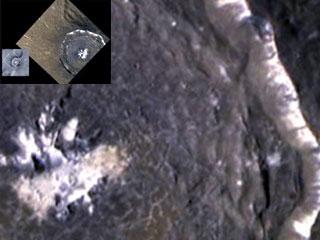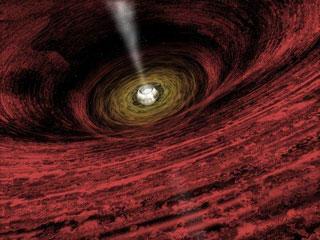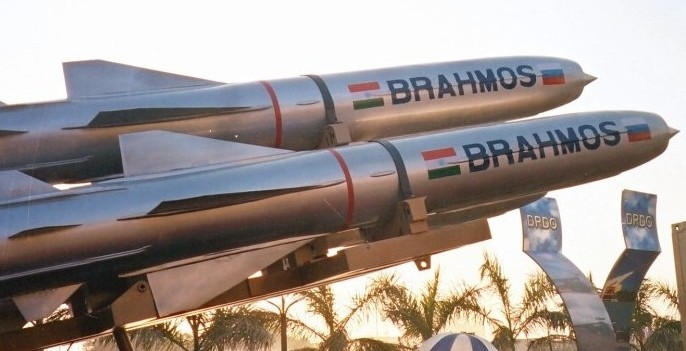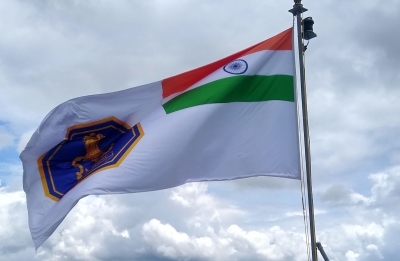
The Degas crater on Mercury. A NASA photo
WASHINGTON (BNS): NASA’s MESSENGER spacecraft, which entered the orbit of Mercury in March this year, has sent back never-before-seen images of the tiny planet closest to the Sun.
The new high-resolution images, tens of thousands in number, reveal some surprising features of Mercury, its surface, topography and magnetic field and magnetosphere.
The data are providing important clues to the origin of the planet and its geological history, according to NASA.
MESSENGER completed its first perihelion passage from orbit, its first superior solar conjunction from orbit, and its first orbit-correction maneouver, this week.
“Those milestones provide important context to the continuing feast of new observations that MESSENGER has been sending home on nearly a daily basis,” Principal investigator Sean Solomon of the Carnegie Institution of Washington, said.
During its earlier flybys of Mercury, the spacecraft had captured patchy deposits on some crater floors of the planet.
The new images reveal these patchy deposits to be clusters of rimless, irregular pits varying in size from hundreds of meters to several kilometers. These pits are often surrounded by diffuse halos of higher-reflectance material, and they are found associated with central peaks, peak rings, and rims of craters.
“The etched appearance of these landforms is unlike anything we’ve seen before on Mercury or the Moon,” according to Brett Denevi, a member of the MESSENGER imaging team.
“We are still debating their origin, but they appear to have a relatively young age and may suggest a more abundant than expected volatile component in Mercury's crust.”
About the planet’s surface composition, MESSENGER has revealed that it has substantial amounts of sulfur.
This discovery suggests that the original building blocks from which Mercury was assembled may have been less oxidized than those that formed the other terrestrial planets, and it has potentially important implications for understanding the nature of volcanism on Mercury, NASA said.
The topography of the planet’s northern polar region is being mapped by the Mercury Laser Altimeter instrument on board MESSENGER which has made over two million laser-ranging observations. The region has been found to be a broad area of low elevations.
Toeing the idea that Mercury’s north and south poles may have deposits of water ice and perhaps other ices preserved on the cold, permanently shadowed floors of high-latitude impact craters, the instrument is measuring the floor depths of craters near Mercury's north pole.
“We are assembling a global overview of the nature and workings of Mercury for the first time,” said Solomon, adding, “and many of our earlier ideas are being cast aside as new observations lead to new insights.
“Our primary mission has another three Mercury years to run, and we can expect more surprises as our solar system’s innermost planet reveals its long-held secrets.”
 Previous Article
Previous Article Next Article
Next Article














The Indian Air Force, in its flight trials evaluation report submitted before the Defence Ministry l..
view articleAn insight into the Medium Multi-Role Combat Aircraft competition...
view articleSky enthusiasts can now spot the International Space Station (ISS) commanded by Indian-American astr..
view article